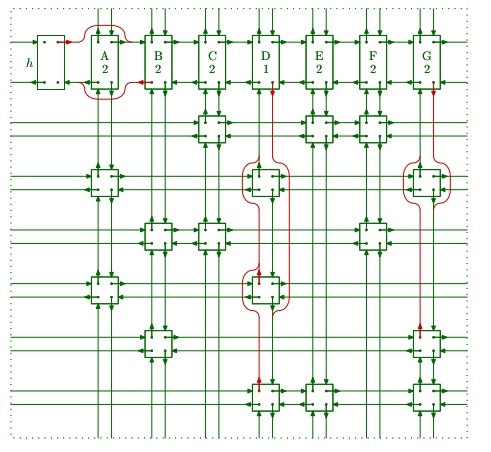Introduction:
Picture this: a secret dance of algorithms, choreographed to solve intricate problems with finesse and elegance. Amid the symphony of algorithms that power competitive programming, there exists a hidden gem that performs a unique dance of its own—the Dancing Links Algorithm. Join us on a journey through the graceful steps of this algorithm, as we unveil its mystery, explore its applications, and discover how it has twirled its way into the hearts of competitive programmers.

The Enchanting Dance of Dancing Links:
Like a masterful dancer, the Dancing Links Algorithm elegantly tackles "exact cover problems"—a conundrum where you need to find combinations of subsets that precisely cover a given set. Imagine this as assembling a jigsaw puzzle, where each piece must fit perfectly without overlap. At the heart of this algorithm is the DLX (Dancing Links) data structure, a matrix representation that brings the dance floor to life.
Implementation of Algorithm:
Create the Exact Cover Matrix: Convert the Sudoku puzzle into an exact cover problem matrix with cells, digits, rows, columns, and boxes as constraints.
Implement Dancing Links Data Structure: Set up a data structure of doubly linked lists (dancing links) to represent the exact cover matrix efficiently.
Choose a Column and Cover Rows: Choose a column (constraint) to work on. Cover the rows (constraints) intersecting with the chosen column and any other cells in those rows.
Repeat Algorithm Recursively: Recursively repeat the algorithm:
If all columns are covered, you have a solution. Uncover rows during backtracking.
If there are no more rows to cover, backtrack.
Implement Backtracking: If a solution is not found, backtrack by undoing covering and uncovering operations.
Continue Recursion: Keep repeating steps 3-4 until a solution is found or all possibilities are exhausted.
Intriguing Moves of the Algorithm:
1. Sparse Matrix Rhythm: The algorithm waltzes through a sparse matrix, where columns represent elements in a set, and rows symbolize subsets that cover specific elements.
2. Elegant Operations: Just as a dance routine consists of various moves, the Dancing Links Algorithm comprises four main moves: cover, uncover, search, and end. These steps manipulate the matrix structure, orchestrating a mesmerizing exploration of potential solutions.
![PDF] Solving Sudoku efficiently with Dancing Links | Semantic Scholar](https://d3i71xaburhd42.cloudfront.net/5f59ccf7aeb1357ad3cf976555e32654f682dbed/12-Figure2.1-1.png)
Dancing Links on the Competitive Programming:
1. Puzzle Enchantments: Sudoku, N-Queens, Pentominoes—these puzzles become mere partners in the dance as the algorithm whirls through their complexities, providing solutions that dazzle the mind.
2. Combinatorial Choreography: From graph colouring to set cover and scheduling problems, the algorithm performs an intricate pas de deux with combinatorial challenges, transforming complexity into simplicity.
3. Constraint Satisfaction Serenade: When resource limitations must harmonize with constraints, the Dancing Links Algorithm conducts a symphony of optimization for tasks like scheduling, timetabling, and resource allocation.
4. Exact Cover Elegance: Like a well-rehearsed finale, the algorithm's prowess shines brightest in exact cover problems—where subsets dance together to cover every element without missing a beat.
The Allure of Dancing Links:
1. Efficiency Enchantment: The algorithm's charm lies in its efficiency. By forgoing backtracking in favour of systematic exploration, it whirls through the solution space gracefully, reducing time complexity and boosting performance.
2. Universal Choreography: While its name might suggest a single dance, the algorithm exhibits the versatility of a seasoned dancer. Its adaptability makes it a match for a multitude of problems beyond its debut role.
3. Optimization Overture: Competitive programming demands speed and finesse, and the Dancing Links Algorithm delivers. Its optimized solutions set the stage for triumph, allowing programmers to outshine the competition.
Conclusion:
In the grand theatre of algorithms, where each contender has its spotlight, the Dancing Links Algorithm emerges as an enchanting performer—graceful, efficient, and adaptable. With its ability to twirl through exact cover problems and captivate intricate challenges, it beckons competitive programmers to join its dance of solutions. As you delve into the enigma of the Dancing Links Algorithm, you'll discover a rhythm that propels you towards innovative solutions, unlocking a world of algorithmic wonder. So, take your partner's hand and let the dance of solutions begin!
